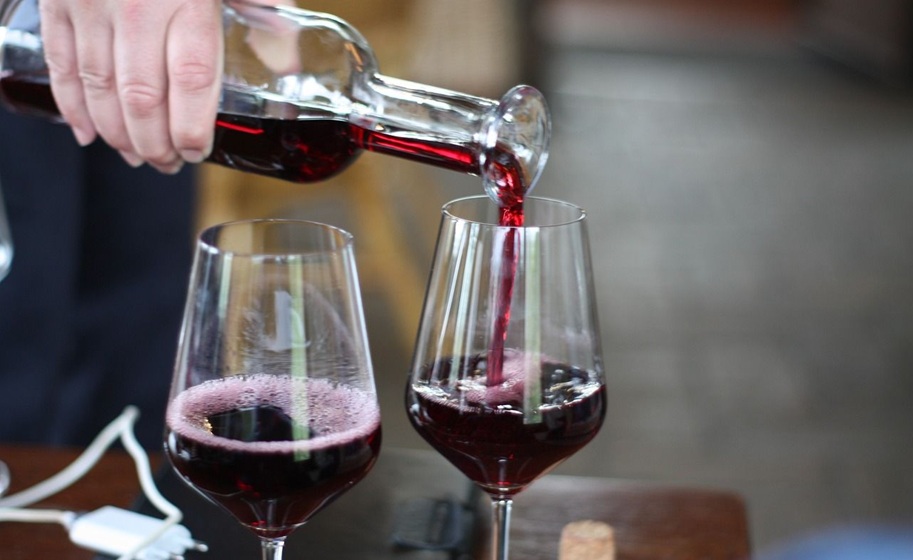Cabernet Sauvignon, simply called the “King of Red Wines,” is a favourite among wine enthusiasts all over the world. Whether you’re drinking a glass by the fireplace, having a barbecue with pals, or sharing a bottle on an evening date, this full-bodied, complex wine will complement just about any occasion. It’s a grape variety that has earned its popularity not just for possessing a strong flavour, but also for retaining its quality after aging and pairing excellently with food.
But if you’re new to the wine world or simply curious about what makes Cabernet Sauvignon red wine unique, you’ve come to the right place. This is a step-by-step guide that will walk you through the basics, from how it tastes and where it’s produced, to how to enjoy it best.
Features

Cabernet Sauvignon is a red grape that originated in France, and specifically in Bordeaux. It is the result of a natural cross between Cabernet Franc and Sauvignon Blanc grapes, and what came out was something wonderful. It migrated in years to practically all the wine-producing nations, finding home in the likes of California’s Napa Valley, Australia’s Coonawarra and Margaret River, and Chile’s Maipo Valley.
Is Cabernet Sauvignon red a good wine? What sets Cabernet Sauvignon apart is its firm structure and powerful, concentrated taste. The wine typically has dark fruit tastes of blackberry, blackcurrant (or cassis), and plum. Besides those rich fruit tastes, you might sense hints of green capsicum, mint, tobacco, cedar, vanilla, and even a trace of leather in older versions. Its hard tannins and medium to high acidity make it full-bodied and assertive, with often a great dryness on the finish.
Ageing plays a big part in its complexity. Young Cabernet Sauvignons are often fruit-forward and punchy, while older ones develop softer textures and more nuanced, earthy tones thanks to time in oak barrels and the bottle. If you’re keen to try the full range of what this grape can offer, it’s worth sampling both younger and aged bottles.
Food Pairings
One of the greatest things about Cabernet Sauvignon is the way it goes so well with food. The full body and rich tannins make it a marriage made in heaven for fatty foods and protein-rich foods. Grilled steak, lamb chops, or beef stew come to mind. When combined with meat, the tannins mellow out, making the wine more drinkable and the food more tasty.
For vegetarians, do not be left out. There are meals of strong flavour like mushroom risotto, grilled eggplant, or lentil shepherd’s pie that can also play the trick well. What you need to do is focus on earthy, savoury foodstuffs that can hold up to the strong personality of the wine.
Cheese lovers will enjoy the pairing of Cabernet Sauvignon with harder varieties like aged cheddar, Gouda, or even blue cheese. These permit the full-bodiedness of the wine to stand out and serve as an added treat.
As for spicy dishes or delicate seafood? It’s better to skip Cabernet for those meals. The tannins can clash with spicy heat, and the boldness can easily overpower light dishes like white fish or prawns. Save the Cabernet for when you’re craving something hearty and satisfying.
How to Serve It?

Having Cabernet Sauvignon served properly really makes a difference. Start with the temperature. Even though red wine is traditionally said to be served at room temperature, that rule that was set can be misleading, especially in warm countries like Australia. The ideal serving temperature for Cabernet is a bit lower, 16 to 18 degrees Celsius. If it is too hot, the alcohol will overwhelm. If it is too chilly, the flavour will be diluted.
Glassware is included, too. Choose a large, tall wine glass that has an ample bowl. This style allows the wine to breathe, enhancing the aromas and softening the tannins as it comes into contact with air. When opening a younger vintage, experiment with decanting for 30 minutes to an hour. This simple action can smooth out the edges and permit the wine’s true personality to come through.
When it comes to storage, Cabernet Sauvignon is a great option if you’re interested in ageing wine. Bottles with good structure and balance can improve over five, ten, or even twenty years. Just keep them in a cool, dark place with consistent temperature and humidity, ideally stored on their side so the cork stays moist.
If you’re a beginner, don’t worry so much about ageing. There are lots of wines meant to be drunk immediately, and these can still offer all the fruit, spice, and sophistication Cabernet is renowned for.
Cabernet Sauvignon has rightfully earned its place as a staple in wine collections around the world. With its deep flavours, strong structure, and incredible versatility, it’s a wine that suits both casual sipping and special occasions. Whether you’re enjoying a glass with a grilled meal or trying out a new vintage from a local vineyard, there’s always something new to discover in every bottle.
For newcomers, the key is not to be awed. Wine seems hard at first, but it is a matter of fun and personal taste. Try various styles, discover what you like, and notice which regions or producers suit you best. The world of Cabernet Sauvignon is rich and diversely wonderful.
